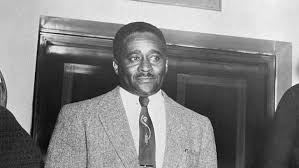In the spring of 1967, five courageous young Black men—Dock Rone, Arthur Dunning, Melvin Leverett, Andrew Pernell, and Jerome Tucker—quietly made history by walking on to the University of Alabama’s football team. Their decision to try out for the Crimson Tide marked the first steps toward integrating one of the South’s most storied and segregated college football programs. Though their names are not as widely recognized as those of later scholarship athletes, these five walk-ons laid the groundwork for the transformation of Alabama football and helped shift the cultural landscape of the university and the Southeastern Conference.
Dock Rone: The First to Wear the Crimson
Dock Rone, a freshman from Carver High School in Montgomery, Alabama, was the first Black athlete to wear a Crimson Tide football uniform. Initially, Rone had no intention of playing football at Alabama. However, after watching the 1966 team go undefeated, he was inspired to join. He reached out to Coach Paul “Bear” Bryant and was invited to try out in the spring of 1967. Bryant, acknowledging the challenges ahead, told Rone, “I admire your courage, young man.”
Rone participated in spring practices and played as an offensive lineman. On May 5, 1967, he took the field in the annual A-Day game, becoming the first Black athlete to play at Denny Stadium as a member of the Crimson Tide football team. Unfortunately, due to family issues and subsequent military service, Rone’s time with the team was cut short. Despite this, his pioneering efforts opened doors for future Black athletes at Alabama.
The Other Four: Dunning, Leverett, Pernell, and Tucker
Joining Rone were four other Black students: Arthur Dunning from Mobile, Melvin Leverett from Prichard, Andrew Pernell from Bessemer, and Jerome Tucker from Birmingham. They reported for the Tide’s first spring practice on April 1, 1967. While Tucker was declared academically ineligible, the others joined Rone on the practice field. Pernell, like Rone, played in the A-Day game, participating in three plays. However, his career with the team ended when it was discovered he was attending school on an academic scholarship, which violated Southeastern Conference rules for student-athletes at the time.
Though their time with the team was brief, these athletes demonstrated immense courage and resilience. Their presence challenged the status quo and set the stage for the integration of Alabama’s football program.
The Broader Impact
The efforts of these five walk-ons were instrumental in paving the way for future Black athletes at the University of Alabama. In 1969, Alabama signed its first Black scholarship athlete, Wendell Hudson, for the basketball team. A year later, Wilbur Jackson became the first Black football player to accept a scholarship at Alabama. In 1971, John Mitchell transferred to Alabama and became the first Black player to take the field for the Crimson Tide during a regular-season game.
These milestones were not achieved in isolation but were the result of the groundwork laid by Rone, Dunning, Leverett, Pernell, and Tucker. Their willingness to confront adversity and challenge deeply entrenched racial barriers contributed significantly to the integration of college football in the South.
Legacy and Recognition
While the names of Rone, Dunning, Leverett, Pernell, and Tucker may not be as widely recognized as those of Jackson or Mitchell, their contributions to the integration of Alabama football are undeniable. Their courage and determination in the face of adversity helped to transform the University of Alabama’s football program and set a precedent for inclusivity and diversity in college athletics.
In recent years, efforts have been made to honor the pioneers who broke racial barriers in Alabama football. In 2022, the university unveiled a plaque outside Bryant-Denny Stadium honoring John Mitchell and Wilbur Jackson for their roles in integrating the team. While the five walk-ons of 1967 have not received the same level of recognition, their legacy lives on in the opportunities they helped create for future generations of athletes.
Conclusion
The story of the five Black walk-ons who joined the University of Alabama’s football team in 1967 is one of quiet courage and profound impact. Though their time on the team was brief and their names may not be widely known, their actions challenged the status quo and set in motion a series of events that would lead to the integration of Alabama football. Their legacy serves as a testament to the power of individual courage in the face of systemic injustice and the enduring impact of those who dare to challenge the barriers before them.

